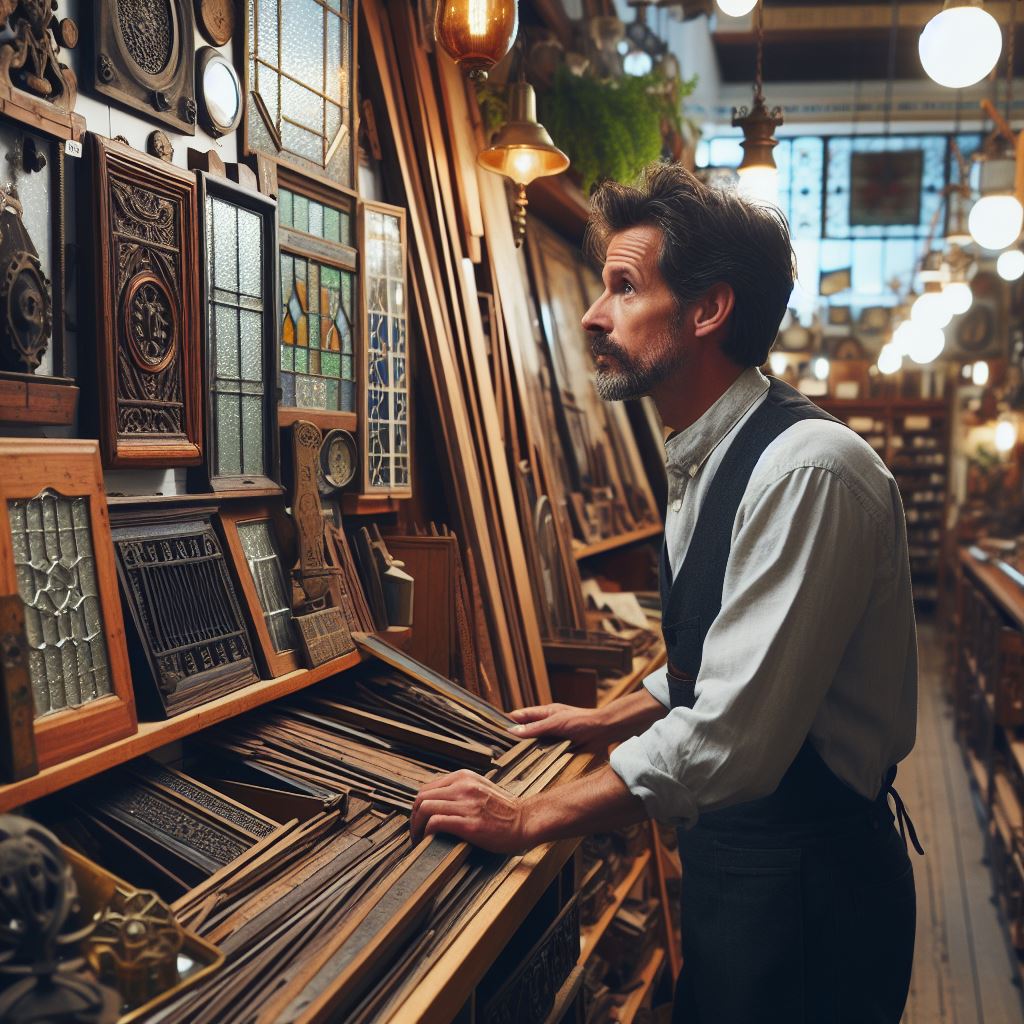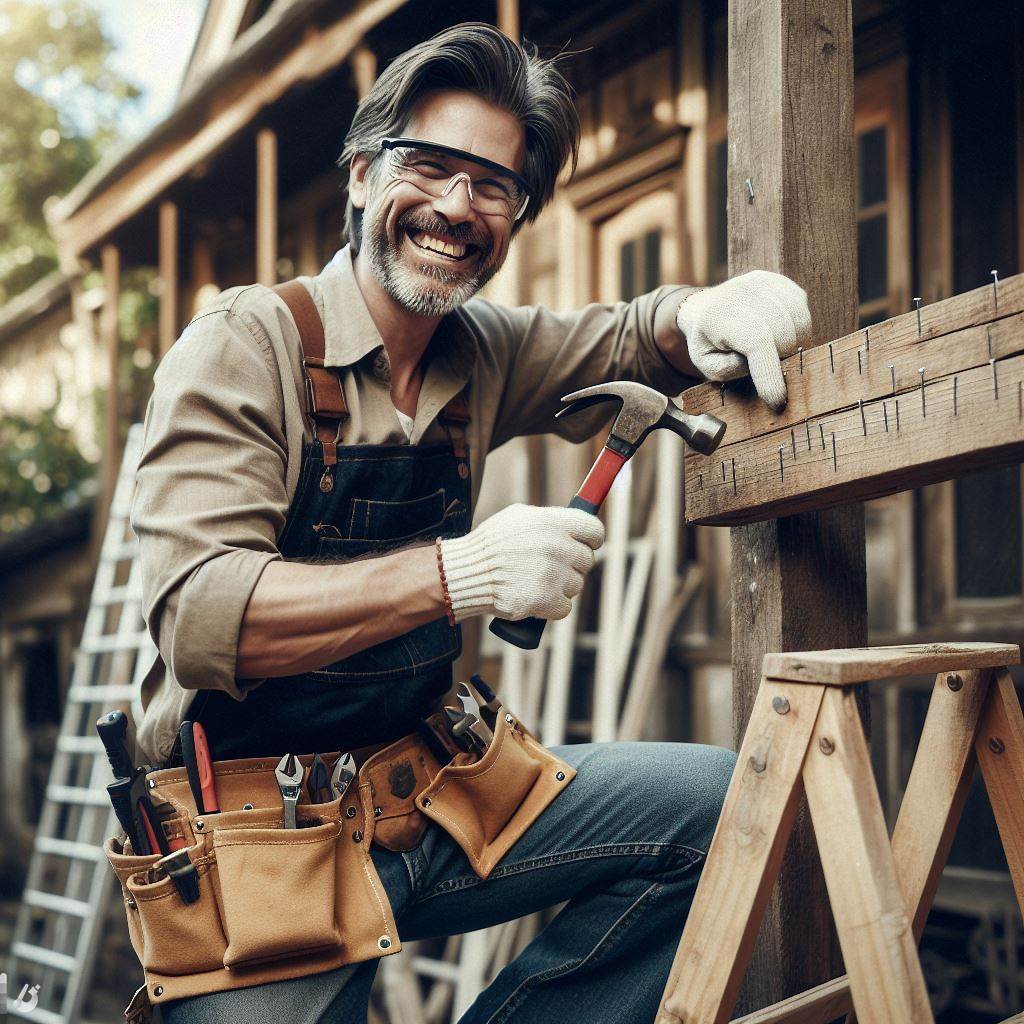Introduction
Using the right materials for old homes is crucial in preserving the authenticity and historical value of these properties.
Neglecting this aspect can lead to various negative consequences such as structural damage and diminished aesthetic appeal.
This blog post aims to emphasize the importance of selecting appropriate materials for old homes and provide insights into the consequences of using inappropriate ones.
By the end of this post, readers will gain a better understanding of the significance of choosing the right materials for old homes.
Understanding the Needs of Old Homes
In order to properly maintain and preserve old homes, it is crucial to use materials that are specifically designed to meet their unique requirements.
Old homes possess a certain charm and character that must be carefully preserved, which is why using the right materials is essential.
Here, we will explore the distinct characteristics of old homes, the importance of preserving their historical and architectural integrity, and the significance of using materials that provide structural stability and protection.
Unique Characteristics of Old Homes
- Aged foundation: Old homes often have foundations that have settled or shifted over time, requiring materials that can accommodate these changes.
- Historical design elements: Old homes are known for their unique architectural features such as ornate trim, decorative moldings, and intricate woodwork.
Preserving these elements requires materials that match their original design. - Vintage charm: Old homes have a certain aesthetic appeal and nostalgic charm.
Materials used should enhance these qualities and maintain the home’s overall character.
Preserving Historical and Architectural Integrity:
Old homes hold significant historical value and architectural heritage. Preserving their integrity not only honors their past but also enhances their value.
Using appropriate materials ensures the authenticity of the home.
Benefits of Preserving Historical Integrity
- Respect for the past: Old homes represent a link to our history and should be treated with respect by preserving their original construction.
- Cultural importance: Historical homes provide a glimpse into the past, showcasing different architectural styles and construction techniques.
- Increased property value: Preserving the historical and architectural integrity of an old home can significantly enhance its market value.
Significance of Structural Stability and Protection
Old homes require materials that can offer structural stability and protection against natural elements.
Using the right materials can prevent further deterioration and ensure the longevity of the home.
Importance of Structural Stability
- Prevent structural damage: Using materials that provide stability can prevent sagging floors, crooked walls, and other structural issues commonly found in old homes.
- Ensure safety: Instability in an old home can pose safety hazards, making it essential to use materials that maintain the structural soundness.
Significance of Protection
- Weather resistance: Old homes are prone to moisture-related issues. Materials that offer protection against water damage, such as specialized coatings or sealants, can help maintain their longevity.
- Pest prevention: Certain materials can act as a barrier against pests like termites and rodents, safeguarding the home from infestations.
- Fire resistance: Using fire-resistant materials in an old home can help protect the structure and reduce the risk of fire-related incidents.
By understanding the unique needs of old homes, recognizing the importance of preserving their historical and architectural integrity, and using materials that provide structural stability and protection, homeowners can ensure the long-lasting beauty and functionality of these cherished properties.
Read: The Do’s & Don’ts of Heritage Restorations
Researching Suitable Materials
Before embarking on any renovation or restoration project for an old home, it is crucial to conduct thorough research.
By investing time and effort into finding the right materials, homeowners can ensure that their project not only respects the historical integrity of the property but also meets modern safety standards.
Here are some important factors to consider when researching suitable materials for old homes:
Importance of Conducting Research
Researching suitable materials is essential as it allows homeowners to make informed decisions.
By understanding the characteristics and qualities of different materials, they can choose options that are not only aesthetically pleasing but also suitable for their specific needs.
Conducting research also helps in avoiding costly mistakes and ensures the longevity of the home’s restoration.
Tips for Finding Reliable Sources
When conducting research for suitable materials, it is necessary to find reliable sources of information.
Preservation societies, historical records, and local experts can serve as excellent sources of knowledge.
These organizations and individuals have immense expertise in preserving and restoring historic properties, making them reliable conduits of information regarding appropriate materials.
They can provide insights into the materials used during the period when the old home was built, helping homeowners make authentic choices.
Preservation societies are particularly valuable resources as they often have extensive archives and resources dedicated to historic preservation.
They conduct extensive research, compile valuable information, and host events that promote the preservation of old homes.
Joining a preservation society can grant homeowners access to a vast network of experts and fellow enthusiasts passionate about restoring old homes.
Historical records are another valuable source of information. They can provide details on the original materials used in the construction of an old home.
By consulting historical records, homeowners can get a better understanding of the period in which their home was built and the materials commonly used during that time.
This knowledge aids in making historically accurate material choices during the restoration process.
Local experts such as contractors, architects, and historians specializing in old homes can also provide invaluable advice.
Their experience working with similar properties equips them with a deep understanding of which materials are best suited for a specific type of old home.
Engaging with these individuals can save homeowners from making misguided choices.
Consideration of Specific Needs and Requirements
In addition to seeking reliable sources of information, homeowners must consider the specific needs and requirements of their old home.
Each historic property is unique and has distinct characteristics that need to be taken into account when selecting materials.
For example, if the old home is located in a humid climate, materials that can withstand high moisture levels should be chosen.
Similarly, if the home is located in an earthquake-prone area, earthquake-resistant materials must be used.
Considering these factors ensures the safety, durability, and longevity of the home’s restoration.
Furthermore, it is crucial to choose materials that match the architectural style of the old home.
The selected materials should blend seamlessly with the existing design elements to maintain the historical integrity of the property.
In essence, conducting research before selecting materials for old homes is of utmost importance when undertaking a renovation or restoration project.
Utilizing reliable sources of information, such as preservation societies, historical records, and local experts, can guide homeowners towards suitable choices.
Additionally, considering the specific needs and requirements of the old home ensures that the materials selected align with its unique characteristics.
By prioritizing research and choosing appropriate materials, homeowners can restore their old homes while preserving their historical significance.
Read: Historic Home Renovations: Key Steps to Begin
Selecting Materials for Different Areas
When it comes to renovating or restoring an old home, one of the most important aspects to consider is selecting the right materials.
Each area of the home may require specific materials that are not only functional but also maintain the authenticity of the historical period and style of the home.
In this section, we will discuss the different areas of an old home that may require specific materials, provide examples of suitable materials for various areas, and highlight the importance of choosing materials that match the historical period and style of the home.
Different areas of an old home that may require specific materials
Old homes have various areas that require different materials to ensure their functionality and preservation. Let’s explore some of these areas:
- Roofing: The roof is an essential part of any home, and for old homes, choosing the right roofing material is crucial.
Materials such as slate, clay tiles, or wooden shingles can give your old home an authentic look while providing durability and protection. - Flooring: Flooring materials vary depending on the area of the home.
For high traffic areas, hardwood or reclaimed wood flooring works well, while more delicate areas like bedrooms may benefit from carpet or linoleum that resembles the historical style. - Windows: Preserving the original windows in an old home is ideal, but if replacements are necessary, choosing materials that match the historical period, such as wood or aluminum clad wood, is essential to maintain the charm and style of the home.
- Doors: Similarly to windows, preserving original doors is preferable.
However, if replacements are required, solid wood or fiberglass doors can mimic the historical design, providing both functionality and aesthetic appeal. - Siding: The siding of an old home plays a significant role in protecting it from the elements.
Materials like wood clapboard or cedar shakes can maintain the historical character, while modern options like fiber cement siding offer better durability and lower maintenance.
Suitable Materials for Various Areas
Now let’s dive deeper into some examples of suitable materials for different areas:
- Roofing: Slate tiles, clay tiles, wooden shingles.
- Flooring: Hardwood, reclaimed wood, carpet, linoleum.
- Windows: Wood, aluminum clad wood.
- Doors: Solid wood, fiberglass.
- Siding: Wood clapboard, cedar shakes, fiber cement siding.
Matching Materials to Historical Period and Style
When renovating or restoring an old home, it’s essential to choose materials that match the historical period and style of the home.
This helps maintain the authenticity and charm of the property. Consider the following:
- Research the historical period of the home to understand the prevalent architectural styles and materials used during that time.
- Consult with experts or preservation societies to ensure you are selecting materials that align with the home’s historical significance.
- Avoid using materials that are historically inaccurate or clash with the overall style of the home, as this can diminish its appeal and value.
- If preserving the original materials is not possible, choose suitable alternatives that resemble the original look.
By carefully selecting materials for different areas of an old home and ensuring they match the historical period and style, you can successfully restore or renovate your old home while preserving its unique character and value.
Read: Tech for Water Conservation at Home

Balancing Authenticity and Modernization
Preservation of Historical Authenticity
When it comes to old homes, preserving their historical authenticity can be a challenging task.
Old houses have a unique charm and character that people often want to maintain.
However, as time goes by, these homes require updates and modernization to meet the needs of modern living.
Finding the right balance between preserving historical authenticity and incorporating modern elements can be a dilemma.
The Need for Modernization
Old homes may have outdated materials or lack modern conveniences, such as efficient insulation or updated wiring.
To make them comfortable and functional for modern lifestyles, certain modernization measures are necessary.
But how do you ensure these changes do not compromise the historical integrity of the house?
Finding Authentic and Practical Materials
One important aspect of maintaining historical authenticity is using materials that are true to the era when the house was built.
However, finding such materials can be a challenge.
One option is to search for salvaged materials from other old houses or architectural salvage yards.
These salvaged materials, like vintage doors or reclaimed wood, add an authentic touch to the home.
Additionally, numerous companies specialize in producing new materials that mimic historical ones.
These companies create replica tiles, crown moldings, and other architectural elements that match the aesthetics of old homes.
When searching for such materials, it is essential to research and select reputable suppliers.
Consider reviews, certifications, and warranties to ensure you are getting quality and authentic products.
The Role of Skilled Craftsmen
Skilled craftsmen play a crucial role in recreating historically accurate materials or adapting modern materials to match the aesthetics of old homes.
Restoration experts can help recreate original features like ornate plasterwork, intricate wood carvings, or custom cabinetry.
These craftsmen have the skills and knowledge to utilize traditional techniques and authentic materials.
They can restore or replicate unique architectural details that may have been damaged or lost over time.
In cases where original materials are not available, skilled craftsmen can adapt modern materials to blend seamlessly with the house.
They are able to replicate the visual appearance and texture of old materials while integrating modern durability and functionality.
Tips for Balancing Authenticity and Modernization
- Research the historical context of your home to understand its original design and materials.
- Consult with experts, such as architects or historical preservation professionals, to ensure your modifications align with the home’s heritage.
- Consider salvaged materials from reputable sources to add authentic touches to your home.
- Look for specialized suppliers that offer high-quality replica materials that match the aesthetics of old homes.
- Hire skilled craftsmen who have experience in historical restoration to recreate or adapt materials.
- Strive for a balance between historical authenticity and modern functionality that suits your personal preferences and needs.
In fact, finding the right materials for old homes requires careful consideration of both historical authenticity and modernization.
Striking the perfect balance can be challenging, but by researching, consulting experts, and utilizing skilled craftsmen, it is possible to achieve a harmonious blend of past and present.
Read: Solar Tech in Home Renovations
Considerations for Maintenance and Upkeep
When it comes to old homes, finding the right materials is crucial for ensuring durability and minimal maintenance.
Not only do these materials contribute to the overall appearance of the house, but they also play a significant role in preserving its value.
Here are some considerations to keep in mind:
Selecting durable materials
- Opt for materials that can withstand the test of time.
- Choose materials that are resistant to wear and tear, such as hardwood floors or high-quality roofing materials.
- Consider the climate and environmental factors that may affect the longevity of the materials.
Minimal maintenance requirements
- Look for materials that require minimal upkeep to save time and money in the long run.
- Avoid materials that are prone to damage or require frequent repairs.
- Consider low-maintenance options like vinyl siding or composite decking.
Tips for maintaining chosen materials
- Regularly inspect and clean the chosen materials according to the manufacturer’s recommendations.
- Address any repairs or damages promptly to prevent further deterioration.
- Apply protective coatings or finishes to prolong the lifespan of the materials.
Preserving the resale value
The choice of materials can significantly impact the resale value of an old home. Here’s why:
- High-quality, durable materials can attract potential buyers and justify higher asking prices.
- Using historic or period-appropriate materials can enhance the charm and character of the house.
- Consider the potential return on investment when choosing materials for renovations or repairs.
Remember that preserving the authenticity and unique features of an old home is crucial when selecting materials.
Thorough research and consultation with experts can help you make informed decisions and ensure the long-term durability and marketability of your property.
Take the time to weigh your options and consider the impact each material can have on the aesthetics, maintenance, and resale value of your old home.
Conclusion
Finding the right materials for old homes is crucial. It ensures authenticity, durability, and historical preservation.
By carefully considering the materials, homeowners can create a harmonious blend of old and new, enhancing the charm and value of their old homes.
It is essential to research, consult experts, and prioritize quality to achieve the desired results.
Remember, every detail matters when it comes to restoring and maintaining the unique character of a historical home.
So, choose wisely and embrace the beauty of preserving the past.




